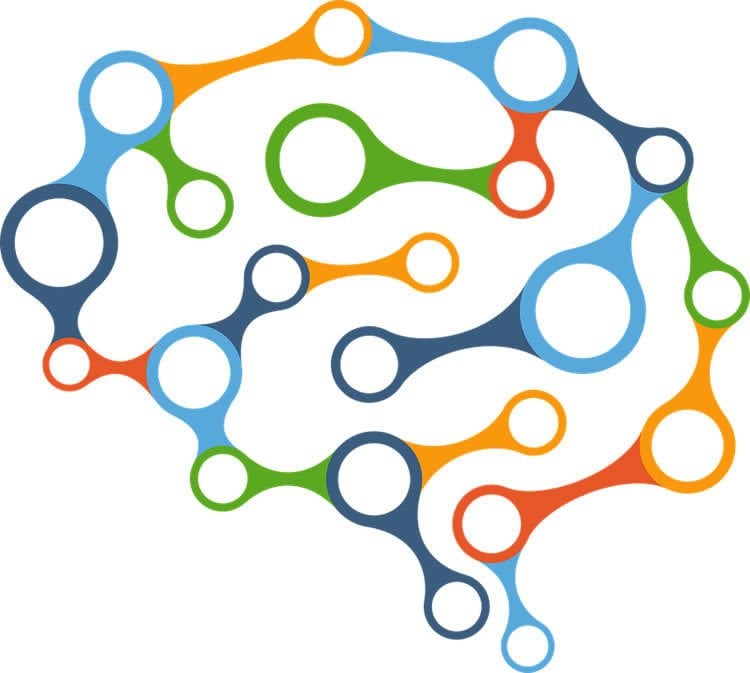Summary: Researchers investigate the neuroscience behind how some people are better at resisting temptation that others.
Source: University of Miami.
What makes some people better able to resist temptation than others? Lucina Uddin and Jason Nomi, cognitive neuroscientists at the University of Miami College of Arts and Sciences collaborated with Rosa Steimke, a visiting postdoctoral researcher in the Brain Connectivity and Cognition Laboratory at UM, to explore this question.
Steimke conducted a study as part of her dissertation work at Charité University in Berlin, Germany, in which participants were asked to perform a simple task: focus on one side of a screen where a letter – either an “E” or “F” – would quickly appear then disappear, and press a button indicating which letter they saw.
But before the letter was presented onto the screen, an image would pop up to the right, and this is where it gets interesting – the images that would appear were quite sensual and erotic. And participants’ eyes definitely wandered to the right for a quick peek, which was captured by using eye-tracking equipment.
“Using this set-up, we were able to challenge participants’ self-control in the face of temptation,” said Steimke.
Adds Uddin, “This study is about individual differences in the ability to control impulses and behavior.”
According to previous research, the brain’s “cognitive control network” is typically involved in behavior that requires self-control. Here, the researchers explored another potential candidate brain system known as the “salience network.” The salience network is a collection of regions in the brain that select which stimuli are deserving of our attention, such as when a driver responds to a person running across the street or is distracted by a large billboard while driving along the highway.
The cognitive control network is related to ‘top-down’ effortful control of attention while the salience network is related to ‘bottom-up’ automatic direction of attention.

“We were interested in comparing the roles of these two networks in self-control behavior,” said Nomi.
Uddin and her team have taken a new approach to studying brain activity and its moment-to-moment variations using a method called “dynamic functional network connectivity.” Using this method, the team was able to examine which brain network (cognitive control or salience) was more closely linked to participants’ tendencies to glance at the sensual pictures even when they knew the goal was to focus on the letter to the left.
Surprisingly, they found that there were no links between cognitive control network dynamics and individual differences in performance on the task. However, those individuals whose brains showed a specific pattern of salience network dynamics were better able to perform the task. Specifically, for some people their salience networks were not as well-connected with the visual networks in the brain. Those individuals who showed this pattern were better able to resist tempting distractors and perform the task.
“Researchers normally study connectivity using traditional approaches, but we used the dynamic approach, which gave us new insight that traditional connectivity analysis did not reveal,” said Uddin. “When we looked at the moment-to-moment, changing dynamic measures of connectivity we saw the relationship with individual differences in eye-gazing behavior emerge.”
Funding: A James S. McDonnell Scholar Award and the National Institutes of Health (1-F32-MH108278-01) funded the research.
Source: Deserae del Campo – University of Miami
Publisher: Organized by NeuroscienceNews.com.
Image Source: NeuroscienceNews.com image is in the public domain.
Original Research: Full open access research for “Salience network dynamics underlying successful resistance of temptation” by Rosa Steimke, Jason S Nomi, Vince D Calhoun, Christine Stelzel, Lena M Paschke, Robert Gaschler, Thomas Goschke, Henrik Walter, and Lucina Q Uddin in Social Cognitive and Affective Neuroscience. Published online October 18 2017 doi:10.1093/scan/nsx123
[cbtabs][cbtab title=”MLA”]University of Miami “Stay Focused, If You Can: Individual Differences in Brain Dynamics Influence Self Control.” NeuroscienceNews. NeuroscienceNews, 1 November 2017.
<https://neurosciencenews.com/brain-dynamics-self-control-7847/>.[/cbtab][cbtab title=”APA”]University of Miami (2017, November 1). Stay Focused, If You Can: Individual Differences in Brain Dynamics Influence Self Control. NeuroscienceNews. Retrieved November 1, 2017 from https://neurosciencenews.com/brain-dynamics-self-control-7847/[/cbtab][cbtab title=”Chicago”]University of Miami “Stay Focused, If You Can: Individual Differences in Brain Dynamics Influence Self Control.” https://neurosciencenews.com/brain-dynamics-self-control-7847/ (accessed November 1, 2017).[/cbtab][/cbtabs]
Abstract
Salience network dynamics underlying successful resistance of temptation
Self-control and the ability to resist temptation are critical for successful completion of long-term goals. Contemporary models in cognitive neuroscience emphasize the primary role of prefrontal cognitive control networks in aligning behavior with such goals. Here we use gaze pattern analysis and dynamic functional connectivity fMRI data to explore how individual differences in the ability to resist temptation are related to intrinsic brain dynamics of the cognitive control and salience networks. Behaviorally, individuals exhibit greater gaze distance from target location (e.g. higher distractibility) during presentation of tempting erotic images compared with neutral images. Individuals whose intrinsic dynamic functional connectivity patterns gravitate towards configurations in which salience detection systems are less strongly coupled with visual systems resist tempting distractors more effectively. The ability to resist tempting distractors was not significantly related to intrinsic dynamics of the cognitive control network. These results suggest that susceptibility to temptation is governed in part by individual differences in salience network dynamics, and provide novel evidence for involvement of brain systems outside canonical cognitive control networks in contributing to individual differences in self-control.
“Salience network dynamics underlying successful resistance of temptation” by Rosa Steimke, Jason S Nomi, Vince D Calhoun, Christine Stelzel, Lena M Paschke, Robert Gaschler, Thomas Goschke, Henrik Walter, and Lucina Q Uddin in Social Cognitive and Affective Neuroscience. Published online October 18 2017 doi:10.1093/scan/nsx123






